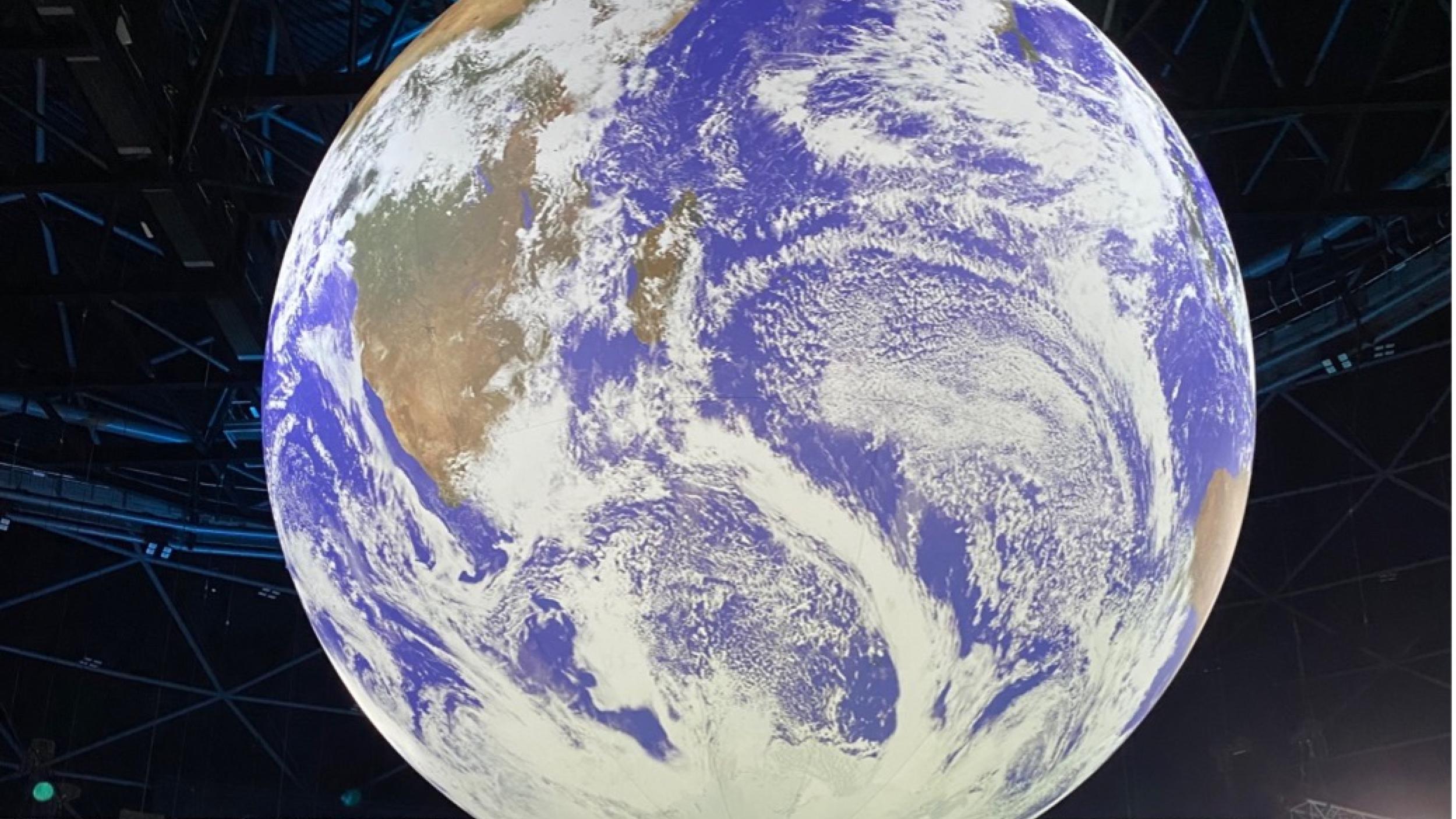
UNFCCC COP26 Global Peatland Pavilion
The Global Peatlands Initiative, co-developed together with UN Environment Programme (UNEP), Wetlands International, Scotland’s Rural College (SRUC), University of East London (UEL), The Succow Foundation, partner of the Greifswald Mire Centre (GMC), National Trust for Scotland and the IUCN UK Peatlands Programme, a Global Peatland Pavilion at the UNFCCC COP26 in Glasgow, Scotland from 1-12 November 2021.

The Global Peatland Pavilion adventure started a few years ago when Richard Lindsay from the Sustainability Research Institute, University of East London first mentioned the idea and, what seemed impossible back then, became a reality this year. Thanks to the hard work of the Global Peatlands Initiative, led by UNEP and its 46 partners, working together to raise awareness on the importance of peatlands for the climate, the planet and the people and strengthening the need to protect, restore and sustainably manage these precious ecosystems, the UNFCCC Blue zone delegates had the pleasure to see the first-ever Peatland Pavilion complete with its star feature, the iconic water droplet.
The water droplet, constructed as far as possible from sustainably harvested materials characteristic of peatland habitats, became a quiet and friendly space for many delegates to meet.
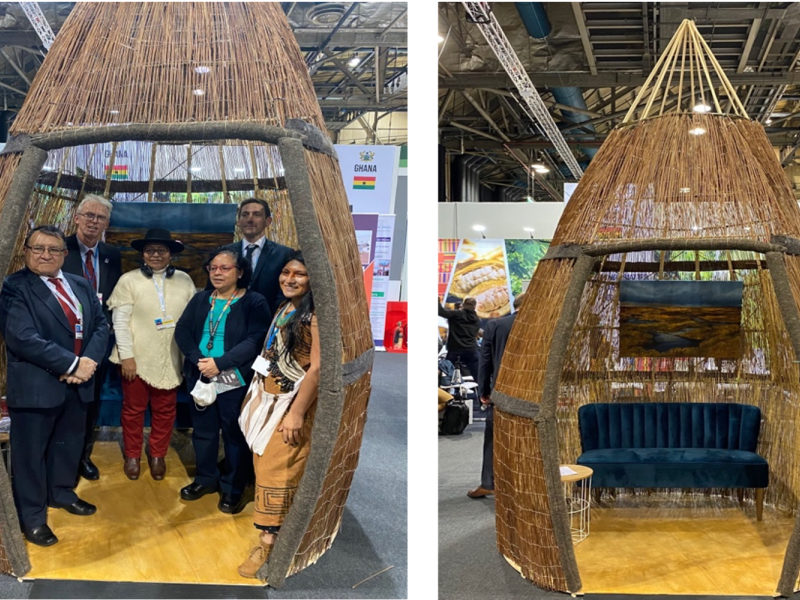
The “Water Droplet” installation (left picture) is constructed as far as possible from sustainably harvested materials characteristic of peatland habitats. The skeleton consists of green willow, which grow in fen peatlands, and pine which grows naturally on some boreal peat bogs. The outer skin consists of willow screens, while the interior is lined with common reed, a typical species of fen peatlands found in many parts of the world. The picture on the right was taken after the event entitled “The Indigenous Peoples Platform to face Climate Change in Peru organized by the Ministry of Environment of Peru (MINAM) on 5th of November.
During the 2 weeks, the team and partners of the GPI held more than 45 informative sessions and networking events physically and online on a broad range of topics with an average of 150 participants online each session. We welcomed over 250 speakers representing all types of stakeholders and over 2700 people from 100 countries registered to the online platform. As far as we know, peatlands had never gathered so many people in one place before which shows the growing recognition of peatlands importance to tackle and abate climate change.
Recordings will be available soon for those who would like to listen or watch again any of the events held at the Peatland Pavilion.
The Virtual Peatland Pavilion
In parallel with the physical pavilion and online platform, the Global Peatland Pavilion organizing team launched, during the COP26, a Virtual Peatland Pavilion, showcasing content from a wide range of contributors. The virtual pavilion was designed and curated by Richard Lindsay from University of East London, with support from Ben Clutterbuck, University of Nottingham Trent, and Jack Clough, University of East London. It is full of content from the Global Peatlands Initiative partners and collaborators from around the world – take the tour and learn more about who is doing what to protect, sustainably manage and restore peatlands around the world here.
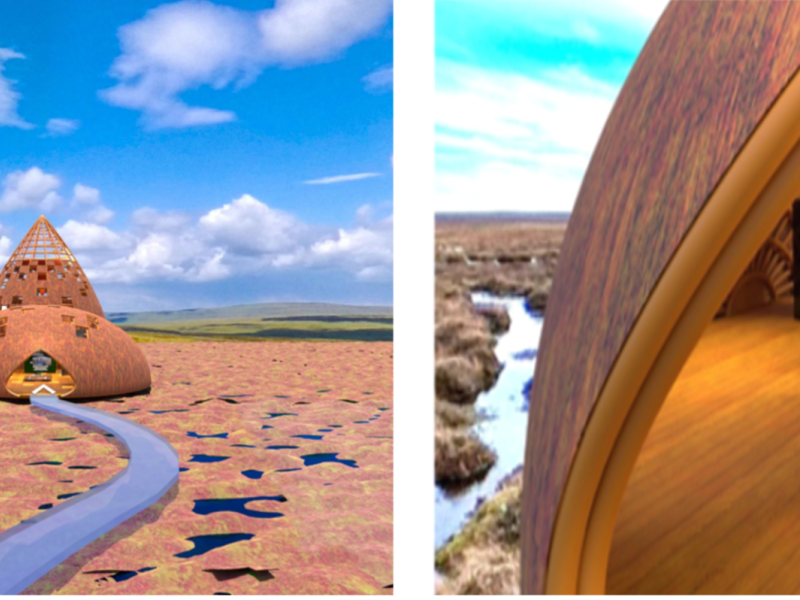
Over the coming days, weeks, and months, the Virtual Peatland Pavilion will continue to evolve as new content from across the global peatlands community is added – providing a global knowledge hub and legacy of the COP26 peatland pavilion which will feature in future international conferences.
The pavilion was made possible through the generous contributions from the following sponsors:

Below are just a few Peatland Pavilion highlights. A full summary will also be available on the GPI website in the coming weeks.
Peatland Pavilion Highlights
Strengthening International collaboration as Chile and Scotland commit to work together for peatlands
During the Opening of the first ever Peatland Pavilion, UNEP Executive Director Inger Andersen called for more countries and more partners to take action for peatland protection and restoration through policies, investments and inclusion of peatlands into their NDCs. Christiane Paulus, Director General from the Ministry of Environment, Nature Conservation and Nuclear Safety of Germany shared Germany’s peatland protection targets within their Climate Change Act, for mitigation through peat soil conservation, together with their ambitious goal to reduce GHG emissions from peat soils by 5 million tonnes of CO2eq. by 2030. Rubén Ramírez Mateo, Minister of Environment of Peru shared Peru’s efforts to highlight the importance of peatland conservation through the approval of a national policy for the multi-sectoral and decentralized management of wetlands, together with the inclusion of peatlands to increase their ambition in their NDC. Further, Chile and Scotland expressed their commitment by signing an MoU to collaborate to support the conservation, restoration, and sustainable management of their wetlands – including peatlands. Michael Matheson, Cabinet Secretary for Net Zero, Energy and Transport from Scotland said “If we protect, restore and sustainably manage these habitats, the rewards will be unprecedented”, and Maria Carolina Schmidt Zaldivar, Minister of Environment from Chile celebrated the moment appreciating the Global Peatlands Initiative’s support and the opportunity to join forces at the Peatland Pavilion for climate action – “You can count on Chile for peatlands protection and restoration” she said.
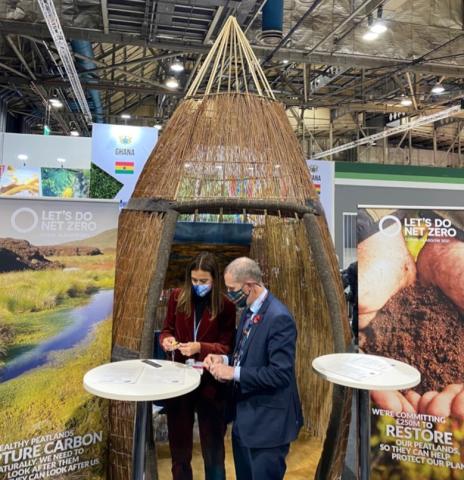
Peatlands advance countries’ climate commitments
Day 2 of the pavilion focused on the opportunity to include Peatlands in countries Nationally Determined Contributions (NDCs) and climate commitments. During the event “Peatlands in climate commitments – Exchange of experience on NDC and Long-Term Strategies”, co-organized by FAO, UNEP, and GPI, three tropical peatlands countries of Peru, Indonesia, and Democratic Republic of Congo (DRC) shared how they are reinforcing their climate commitments through the inclusion of peatlands in their NDCs as long-term strategies to combat climate change. These countries are leading the way and by sharing, inspiring other countries to follow their example by valuing their peatlands and mitigating their emissions towards the achievement of the Paris Agreement’s long-term goal. Peru shared their proposal entitled “Conservation and Sustainable Management of Amazonian Peatlands”, which consists in the identification of different conservation methods together with the strengthening of the indigenous peoples capacities and local communities that involves a participatory approach to secure a long-term solution for the conservation of peatlands.
Indonesia’s Ministry of Environment and Forestry remains dedicated to peatlands restoration and rewetting. Recognizing that monitoring peatlands is critical, Haruni Krisnawati, Senior Researcher in the Ministry of Environment and Forestry of Indonesia shared that the Ministry has set up “situation rooms to monitor peatlands and see how they are changing”. Thibaut Portevin, Head of Cooperation, EU Delegation to Indonesia expressed his excitement in seeing ASEAN member states’ success stories, lessons learned and best practices featured in the Peatland Pavilion: “The presence of a Peatland Pavilion it’s important specifically at COP26 and I’m glad that partners such as ASEAN play an important role in it!”
The DRC stressed the importance that peatlands have for the country and renewed the country’s commitment to preserving and conserving these pivotal ecosystems. Jean-Jacques Bambuta Boole, Peatland Management Unit Coordinator said: “We are aware of the importance of peatlands in tackling the global climate crisis and with our neighbor, the Republic of Congo, we share the vision of protecting peatlands for people and nature”. On the same note Dr. Dickinson, Ecosystem Management Senior Specialist Green Climate Fund highlighted that indigenous peoples involvement is key to ensuring a sustainable peatlands management: “In DRC there will be a GCF Readiness project soon which will be looking at identifying peatland areas and promoting their conservation involving local people”.
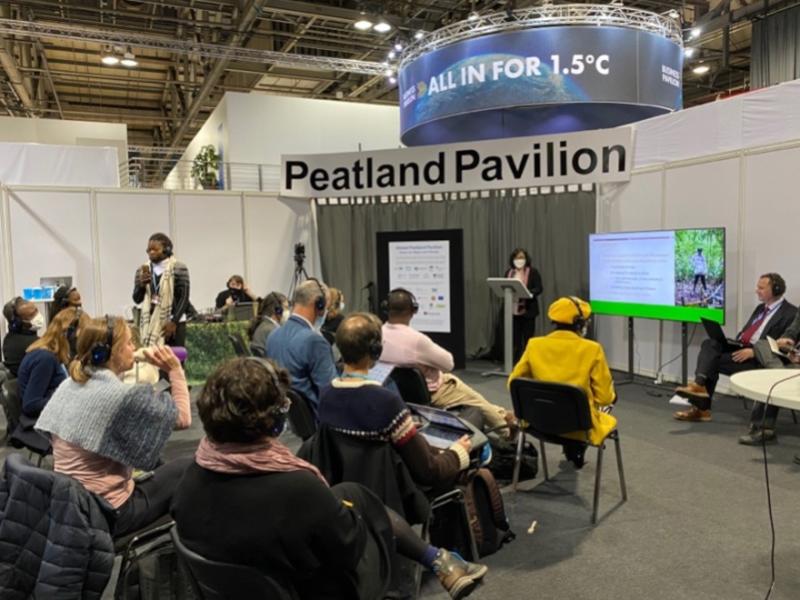
Reinforcement of Peatlands in ASEAN member states’ NDCs
The Association of Southeast Asian Nations (ASEAN), including its 10 member states, hosted an event on November 2nd to present the importance of Southeast Asian tropical peatlands, which hold 77% of the global tropical peat volume, and showcased their inclusion in their NDCs. During the event “Importance of ASEAN Peatlands in Contributing to Global Climate Change Mitigation”, government representatives from Indonesia, Malaysia, Philippines, Thailand, and Lao PDR, shared successful examples of peatland restoration and policies, showcasing the ASEAN Peatland Management Strategy in partnership with GEF and Global Environmental Center (GEC) to combat peatland fires and haze pollution, as well as the Measurable Action for Haze-Free Sustainable Land Management in Southeast Asia (MAHSFA) project, which seeks to develop an estimated US$1.5 billion investment programme focusing on haze elimination and sustainable peatland management anchored in country and regional level activities.
Undervaluing and Underinvesting in peatlands is undermining our ability to meet the Paris Agreement
On November 4th, world renowned economists Edward Barbier, Pushpam Kumar and Joanne Burgess highlighted the urgent need for action for peatlands restoration and protection. Launching the “Economics of Peatlands Conservation, Restoration, and Sustainable Management” policy report, panelists exchanged the leading causes of peatland mismanagement – which are undervaluation and underinvestment. Klaus Glenk, Julia Marin-Ortega and Johan Kieft shared their passion for peatlands sighting innovative finance mechanisms, incentives and policy measures that countries like Scotland, Indonesia and the United Kingdom are already employing to make climate impact a reality. There is more opportunity for impact when investments in sustainable land use include no peatlands extraction and no peatlands drainage commitments and when they also invest in protecting irrecoverable carbon stored in peatlands.
North American Peatlands sheer size and importance was prominent during UNFCCC COP26
On 8th of November during the event: “The essential carbon service provided by northern peatlands and the case study of the Hudson Bay Lowlands”, the Wildlife Conservation Society Canada shared the findings of a paper by Harris et al., showing that northern peatlands have cooled the global climate by accumulating “irrecoverable carbon” over thousands of years, critical for achieving net-zero global carbon dioxide emissions by 2050 to mitigate climate warming. With one-quarter of the world’s northern peatlands being in Canada, targeted policies from local to global scales are needed to avoid the degradation of these peatlands. The potential of peatlands in North America was also highlighted earlier in the week by Erik Lilleskov, Research Ecologist for the US Forest Service during the Peatlands restoration for greater resilience and adaptation session. Erik emphasized that: “In the US, peatlands could contribute to natural climate solutions and uncertainties could be reduced by more resolved mapping of the peat condition”. That same day, Joe Biden, President of the United States of America announced his forest conservation plan which states that peatlands are one of the “critical ecosystems” the plan highlights as essential to combat climate change. The plan also includes boosting private sector support for forest and peatlands conservation – a great news for peatlands in the USA!
Launching the baseline Global Peatlands Map 2.0 as a foundation of the Global Peatlands Assessment
On November 9th the GPI launched its Global Peatlands Assessment (GPA) during the event: “State of peatland knowledge – Global Peatlands Assessment & Mapping” co-organized by UNEP, GMC, UNEP-WCMC, and FAO. The GPA aims at filling the knowledge and research gaps on peatland distribution, status, trends and pressures, bringing the best available science together to produce a global overview of the state of the world’s peatlands. Additionally, the Global Peatland Map 2.0 produced by GMC was also shared as the base map for the GPA – improving the knowledge on the location and extent of peatlands worldwide. The GPA will continually work to improve the knowledge base and engage experts in order to help countries make informed decisions, contribute to policies and plans and to help guide action for the conservation, restoration and sustainable management of peatlands.
Promoting the England Peat Action Plan
On Policy Day – November 10th the Department for Environment, Food and Rural Affairs of the UK (DEFRA) and Natural England presented the England Peat Action Plan. The Plan articulates the government’s long-term vision for the management, protection, and restoration of their peatlands so they can provide a wide range of benefits to wildlife, people, and the planet. The plan builds into it increased ambition and a pathway toward the banning of the use of peat in horticulture. The event was also a chance to celebrate DEFRA joining the Global Peatlands Initiative.
Showcasing the German National Peatland Conservation Strategy
Also on Policy Day, the Federal Ministry of the Environment, Nature Conservation and Nuclear Safety (BMU), GMC, UNEP and GPI co-organized an event entitled: “Peatland protection in Germany – a new policy approach”, sharing on the progress achieved in Germany for peatland protection and showcasing their recently published National Peatland Conservation Strategy. The team who developed the Peatland Strategy shared how they included principles, goals, and measures required for successful peatland protection at a federal level. The Strategy is based on cooperative approaches and intensified public relations work, bringing together different involved stakeholders for the implementation. The Strategy includes peatlands renaturation and rewetting of degraded and drained peatlands linked to the country’s climate and nature goals.
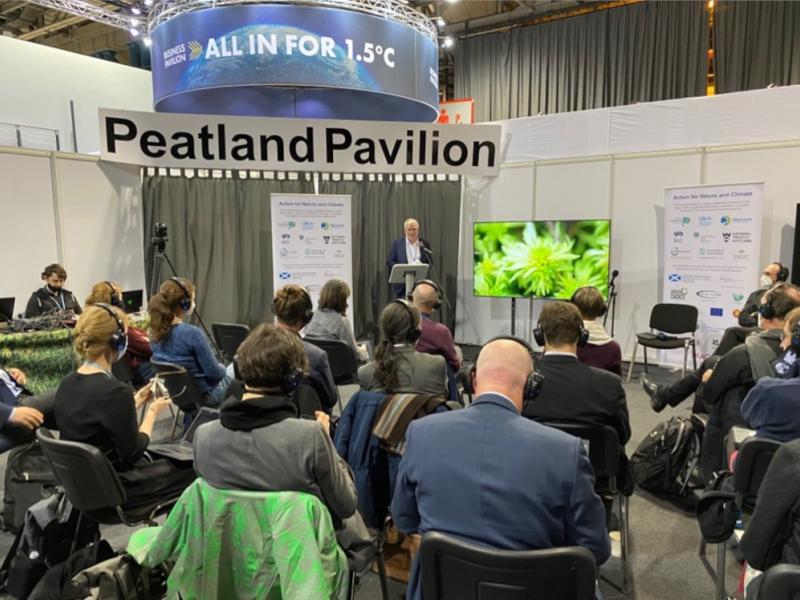
Leveraging Multilateral Environmental Agreements synergies on Peatlands
On 10th of November, the Ramsar Convention on Wetlands Secretariat, UNEP, German Federal Agency for Nature Conservation (BfN), the UN Convention to Combat Desertification (UNCCD), the Convention on Biological Diversity (CBD), the UN Framework Convention on Climate Change (UNFCCC) and GPI came together to advance the work on: “Leveraging MEA synergies: Peatland protection and restoration for climate outcomes”. The sessions highlighted the ongoing synergistic cooperation towards a common aim to save peatlands as the world’s largest terrestrial organic carbon stock between the MEAs. Peru, DRC, and Germany shared their experience in working on peatlands conservation and restoration and how that work helped progress their commitments under a number of MEAs. The countries also agreed that through MEA focal points and actions joining up for peatlands protection and restoration, with support from the GPI and MEA Secretariats, the work can both increase in scale and speed. Under the framework of the UNEA4 Resolution on Peatlands and through the mechanisms and enabling resolutions in all the MEAs present, the partners agreed that working together for peatlands conservation and restoration is a triple win for climate, nature and water impacts.
Conserving the Peatlands of the Nile Basin
On Policy Day, the German Agency for International Cooperation (GIZ), GMC, the Nile Basin Initiative (NBI), the Ministry of Water and Environment from Uganda, and the Ministry of Environment and Forestry from South Sudan, came together to raise awareness regionally and globally about the importance of peatlands in the Nile Basin. These peatlands, covering approximately 30,445 km², are estimated to contain 4.2 – 10 Gt of carbon, representing 5 to 10 % of the known tropical peat carbon stock of the world. In the region, peatlands are fast being converted into agricultural land and the provisions of ecosystem services are being threatened. Governments of Uganda and South Sudan shared their recent experiences in incorporating peatlands action into their climate change policies and instruments, and also opened up a dialogue with other relevant players from the Nile Basin and beyond, on how to scale up these efforts. They called for support from the international community and appreciated the efforts of the Global Peatlands Initiative and partners in helping connect them with experts and knowledge of peatlands conservation and restoration for the benefit of their most vulnerable populations.
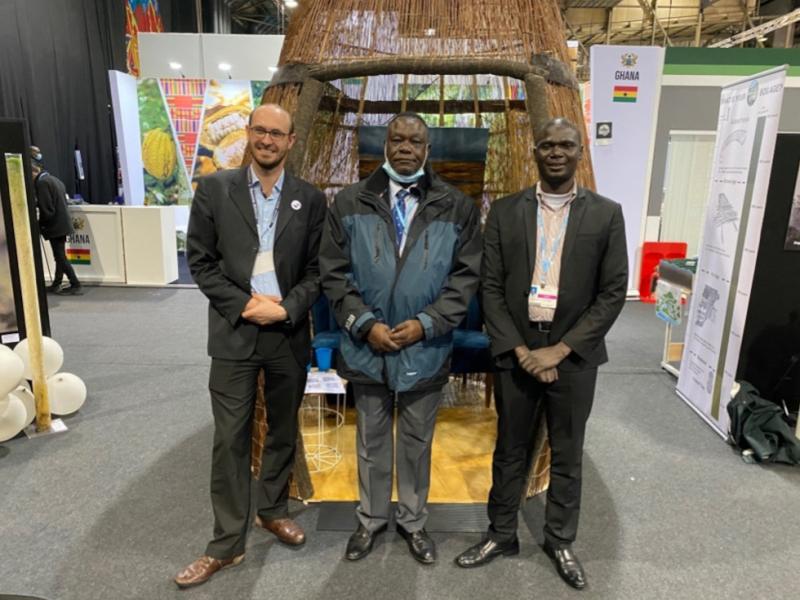
A Youth Call for Peatland Action
On Partnership Day in the Pavilion on 11 November, several youth organizations including RE-PEAT, the International Forestry Students Association (IFSA), and Youth Engaged in Wetlands (YEW), came together to hold a dynamic session on “Ancient Peatlands for the Present and Future”. After insightful reflections, exercises, and a sensory workshop – which allowed people to engage with peatlands on a personal level – youth perspective towards peatlands was discussed among a panel of distinguished youth advocates. The speakers highlighted the challenges faced by them including intergenerational injustice and appreciated that the Peatland Pavilion was a place where Green Zone, Blue Zone and no-access youth from around the world could gather, exchange and share their concerns about the neglect of youth and peatlands in the climate change discussions. They highlighted the importance of giving space to the diversity of perspectives which exist among youth and the role youth play in raising awareness for peatlands. The session and its coordination offered the youth the opportunity to connect cross networks and regions and to start to generate a strong and unified youth voice for peatland action. The GPI youth members encouraged more youth organizations to join the Global Peatlands Initiative – to build a strong youth movement to drive multigenerational collaboration towards the restoration and conservation of global peatlands.
Advance on the Patagonian Peatland Initiative
On Partnership Day, the “Patagonian Peatland Initiative: conservation partnership for thriving peatlands” session organized by WCS Chile, the Ministry of Environment of Chile, University of Tierra del Fuego Argentina, Ensayos, Manfred Hermsen Stiftung, GMC, and GPI, took further steps to solidify action to protect the world’s most southern and rare peatlands of Tierra del Fuego. Outside the tropics, Patagonian peatlands serve as the main carbon sink of the southern hemisphere and the Patagonian Peatlands Initiative is aiming to establish a locally-based, multi-actor, multi-scale partnership through the conservation of the peatlands of Patagonia with support and connection to the Global Peatlands Initiative. Patagonia peatlands have global implications in climate change mitigation and nature protection and will require international support grounded through local partners for action and impact.
Dialogues towards a European Peatland Initiative
On 12th of November the “Dialogues towards a European Peatlands Initiative” session hosted by the Irish Government, with support from Bax & Company, UNEP, GPI, Eurosite and GMC welcomed an open exchange of ideas between Ministers of Ireland, Iceland, Germany and representatives of Latvia, the Netherlands. The open dialogues built on previous efforts that European governments, peatland experts and multiple stakeholders have been taking to work together for peatlands action across Europe. The dialogues build on the concept and collaboration of the GPI which has seen impact for peatlands at scale and speed as a result of peer-to-peer facilitated experience exchange and collective sharing. The UNEP-led Global Peatlands Initiative called for action of European governments with support of multi-stakeholder partners to advance the implementation of the UNEA4 Resolution on peatlands and to take the opportunity to create momentum and establish a European Peatlands Initiative linked to the GPI to share knowledge, learn from each other and increase investment in peatlands protection and restoration by establishing strategic partnerships for peatlands across Europe.
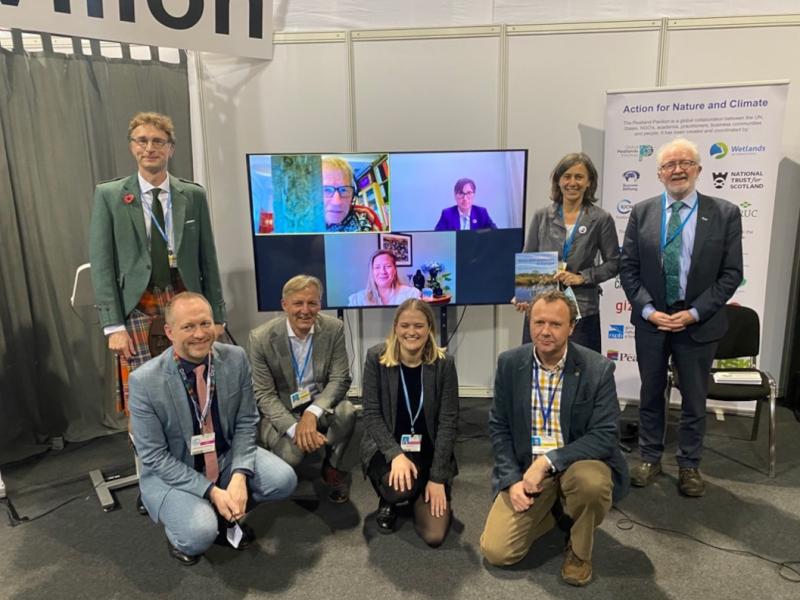
About the UNFCCC COP26
The 26th session of the Conference of the Parties (COP 26) to the UNFCCC was originally scheduled to take place from 9-19 November 2020, in Glasgow, UK and was postponed to 1-12 November 2021 due to the Covid-19 pandemic. The COP was attended by the countries that signed the United Nations Framework Convention on Climate Change (UNFCCC) – a treaty that came into force in 1994.
To read about the outcomes of the Glasgow Climate Change Conference, click here.
Our thanks
The Global Peatlands Initiative would like to thank once again all the organizers, the speakers, the participants and the sponsors, who have recognized the immense potential of peatlands as a key Nature-based Solution for climate mitigation and adaptation and have decided to be part of the adventure. Thank you for joining us on this journey to advocate for the conservation, restoration, and sustainable management of peatlands, because #PeatlandsMatter for our nature and climate future!